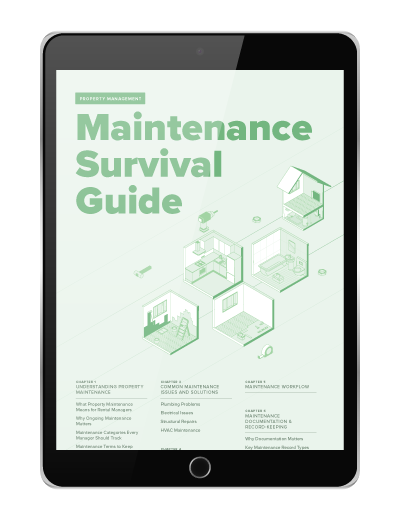Everybody likes a freebie, or something extra. Condominium and apartment amenities are hardly new. International Village in Bloomington, Minnesota, opened in 1968 with perks that could rival those now used to woo buyers and renters — pools, hot tubs, and so on. All that’s missing at the 20-acre property may be today’s ubiquitous dog park, which property manager Emily Paulino says may be added in place of a putting green.
Through the years, amenities change to reflect trends, often inspired by luxury hotels, demographics such as millennials wanting bigger, better communal hubs, and economic ups and downs. Since the country emerged from the last recession, developers and property managers have piled on the amenities, and even smaller buildings are trying to add something to compete.
Not doing so can pose a risk. Lloyd Companies in Sioux Falls, South Dakota, recently developed two properties — one with a community center from opening day and the other with plans to add it in a later phase.
“The first leased up right away. The second suffered, so we hurried up and added it before completion,” says Christie Ernst, interim vice president and property manager of the company, which develops and manages properties ranging from 25 to 248 units.
Weigh your options before offering amenities
But deciding what to include can prove tough, particularly with fewer occupants to amortize costs, let alone less space to transform. Here’s how to weigh options:
- Available space — Do you have the square footage to devote to nonlivable space, and what is its best function? Is there space for a workout room, and if it’s only a small, windowless room in the basement, will occupants use it?
- Money — Do you have sufficient profit and the income stream to cover construction and ongoing maintenance? Ernst says her company typically adds amenities at larger buildings of 140 units and up where it can charge higher rents, or receive tax credits. And when costs become too high, the firm has sometimes taken them away, which doesn’t always go over well. For example, two older pools each needed $50,000 of work, which wasn’t economically feasible. Some residents moved out, and for those who stayed and were eager to swim, the company bought public pool passes.
- Market knowledge — Do you have a pulse on your market demographics because tastes change and are often dependent on location, price, gender, and age? The increased number of dog parks reflects money homeowners lavish on Fido — about $58.5 billion last year, according to the American Pet Products Association. To recoup costs, The Bozzuto Management Co. in Washington, D.C. charges a one-time fee of $500 for one pet and $800 for two, and monthly charges thereafter of $60 per pet.
What amenities do today’s tenants want?
Many apartment amenities aren’t feasible for smaller buildings, but you still should stay on top of available options by reading trade magazines, studying the competition, looking at what hotels and B&Bs add, and reading surveys.
The National Multifamily Housing Council in D.C.’s 2013 NMHC/Kingsley Apartment Resident Preferences Survey offers important input, says Rick Haughey, vice president of industry technology initiatives. “In the survey, 93 percent of respondents put high-speed Internet for their unit highest on their list,” he says.
Individual outdoor space shared top billing. But if your building or community doesn’t include balconies or patios, think creatively. A shared common area may be possible and affordable at ground level or on top of the roof. On Paulino’s wish list: a communal culinary garden because of so much interest in cooking and being healthful.
Laundry equipment ranked right below Internet and balconies in the survey. In the Midwest, it’s “ill-advised” not to have one in each unit, says Ernst. Paulino says she’s learned how to market International Village’s shared facility. “We point out residents get more dedicated closet space and cut their utility costs.”
Concessions such as one-month free rent don’t require square footage, though you have to be sure your bottom line can take the hit. Developer Ross Fefercorn, founder of RMF Group in Minneapolis, thinks doing so creates a cycle of loss that drives down effective rents for all in the market.
Ernst, however, finds it can be helpful, but uses it judiciously. She recently offered one-month free at a 192-unit property with nine empty one bedrooms, and it generated five leases in three days. Michael Hern, a salesman with RE/MAX Gold Coast Realty in Hoboken, New Jersey, says leniency in breaking a lease after a year is more key.
One sure-fire, affordable way to show you care is to orchestrate get-togethers, from wine, beer, and cheese tastings to holiday parties, and more. But before you uncork that Pinot Noir, find out what events occupants may attend and if on site or at a neighborhood venue.
The NMHC survey reflected wide geographic and demographic preferences. And you need to weigh how you inform residents — and how often. Email? Twitter? Or Facebook? The majority of survey respondents didn’t expect a building to have a Facebook page; moreover, 46 percent said they would never look at it.
Final tip: Location and price may still trump amenities in most markets, but offering something to set your property apart should rank high on your to-do list. “The more good will you generate by doing more than signing leases and handling maintenance helps,” says Fefercorn, “but remember it’s better to underpromise and overdeliver than overpromise and underdeliver.”
Read more on Leasing

